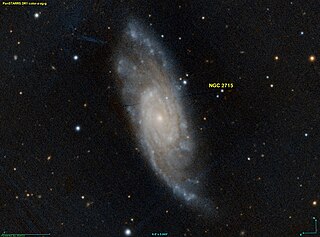
NGC 2715 is an intermediate spiral galaxy in the constellation Camelopardalis. It was discovered in 1871 by Alphonse Borrelly. It is an intermediate spiral galaxy that is 4.9 arcminutes wide.

NGC 98 is a barred spiral galaxy in the Phoenix constellation. The galaxy NGC 98 was discovered on September 6, 1834 by the British astronomer John Frederick William Herschel.

NGC 99 is a spiral galaxy in the constellation Pisces. It was discovered on 8 October 1883 by the French astronomer Édouard Stephan.

"Legacy Survey Sky Browser". www.legacysurvey.org. Retrieved 2023-05-19.
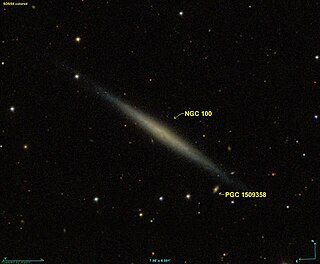
NGC 100 is a galaxy located approximately 60 million light-years from the Solar System in the constellation Pisces. It has an apparent magnitude of 13.2. It was first discovered on 10 November 1885 by American astronomer Lewis Swift.

NGC 79 is an elliptical galaxy estimated to be about 270 million light-years away in the constellation of Andromeda. NGC 79 is its New General Catalogue designation. Its apparent magnitude is 14.9. It was discovered on 14 November 1884 by Guillaume Bigourdan.

NGC 81 is a lenticular galaxy estimated to be about 270 million light-years away in the constellation of Andromeda.
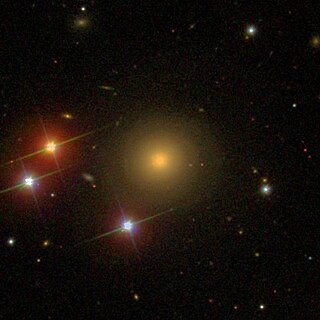
NGC 83 is an elliptical galaxy estimated to be about 260 million light-years away in the constellation of Andromeda. It was discovered by John Herschel in 1828 and its apparent magnitude is 14.2.
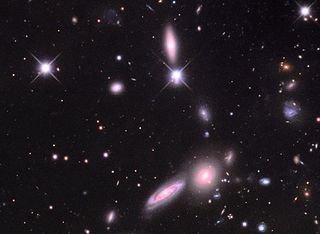
NGC 85 is an interacting spiral or lenticular galaxy estimated to be about 200 million light-years away in the constellation of Andromeda. It was discovered by Ralph Copeland in 1873 and its apparent magnitude is 15.7. The galaxy appears to be interacting with the companion spiral IC 1546.

NGC 96 is a lenticular galaxy estimated to be about 290 million light-years away in the constellation of Andromeda. It was discovered by Guillaume Bigourdan in 1884 and its apparent magnitude is 17.
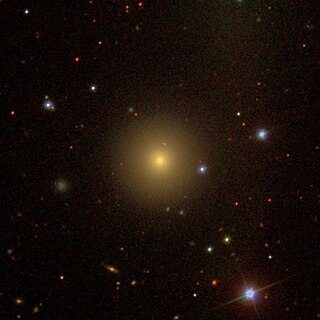
NGC 97 is an elliptical galaxy estimated to be about 230 million light-years away in the constellation of Andromeda. It was discovered by John Herschel in 1828 and its apparent magnitude is 13.5.

NGC102 is a lenticular galaxy estimated to be about 330 million light-years away in the constellation of Cetus. It was discovered by Francis Leavenworth in 1886 and its apparent magnitude is 14.

NGC 106 is a lenticular galaxy estimated to be about 270 million light-years away in the constellation of Pisces. It was discovered by Francis Leavenworth in 1886 and its apparent magnitude is 14.5.
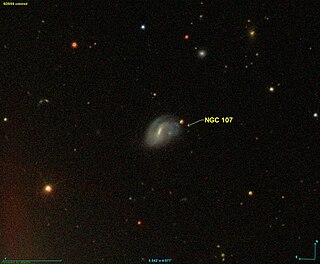
NGC 107 is a spiral galaxy estimated to be about 280 million light-years away in the constellation of Cetus. It was discovered by Otto Struve in 1866 and its magnitude is 14.2.

NGC 109 is a spiral galaxy estimated to be about 240 million light-years away in the constellation of Andromeda. It was discovered by Heinrich d'Arrest in 1861 and its magnitude is 13.7.
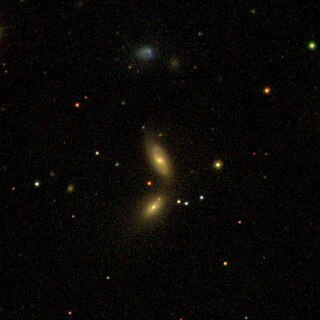
NGC 94 is a lenticular galaxy in the constellation Andromeda. It was discovered by Guillaume Bigourdan in 1884. This object is extremely faint and small. A little above the galaxy is NGC 96. NGC 94 is about 260 million light-years away and 50,000 light-years across.
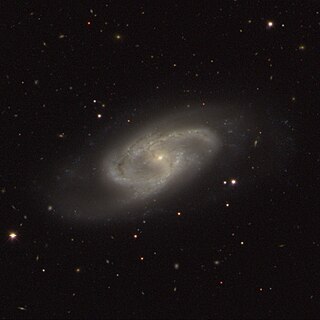
NGC 150 is a barred spiral galaxy in the constellation Sculptor. It is about 70 million light years away from the Solar System, and it has a diameter of about 55,000 light years. It was discovered on 20 November 1886, by Lewis A. Swift. The Type II supernova SN 1990K was detected in NGC 150, and was reported to be similar to SN 1987A.
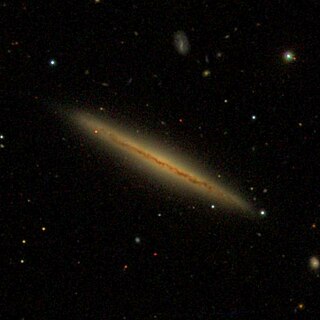
NGC 5470 is an edge-on spiral galaxy located between 43 and 68 million light-years away in the constellation Virgo. It was discovered by astronomer John Herschel in 1830. It is a member of the Virgo III Groups, a series of galaxies and galaxy clusters strung out to the east of the Virgo Supercluster of galaxies.

NGC 485, also commonly referred to as PGC 4921 or GC 270, is a spiral galaxy in the constellation Pisces. It is located approximately 86 million light-years from Earth and was discovered on January 8, 1828 by astronomer William Herschel. It was later also observed by Heinrich d'Arrest and Herman Schultz. When NGC 485 was originally categorized in the New General Catalogue by John Louis Eil Dreyer in 1888, it was incorrectly described as a "considerably faint, pretty large, round, 8th magnitude star 3 1/2 arcmin to southwest".

NGC 546 is a barred spiral galaxy about 270 million light years away from Earth and located in the constellation Sculptor. The largest diameter is 1.40 and the smallest is 0.5 angular minutes. The first discovery was made by John Frederick William Herschel on 23 October 1835.




















